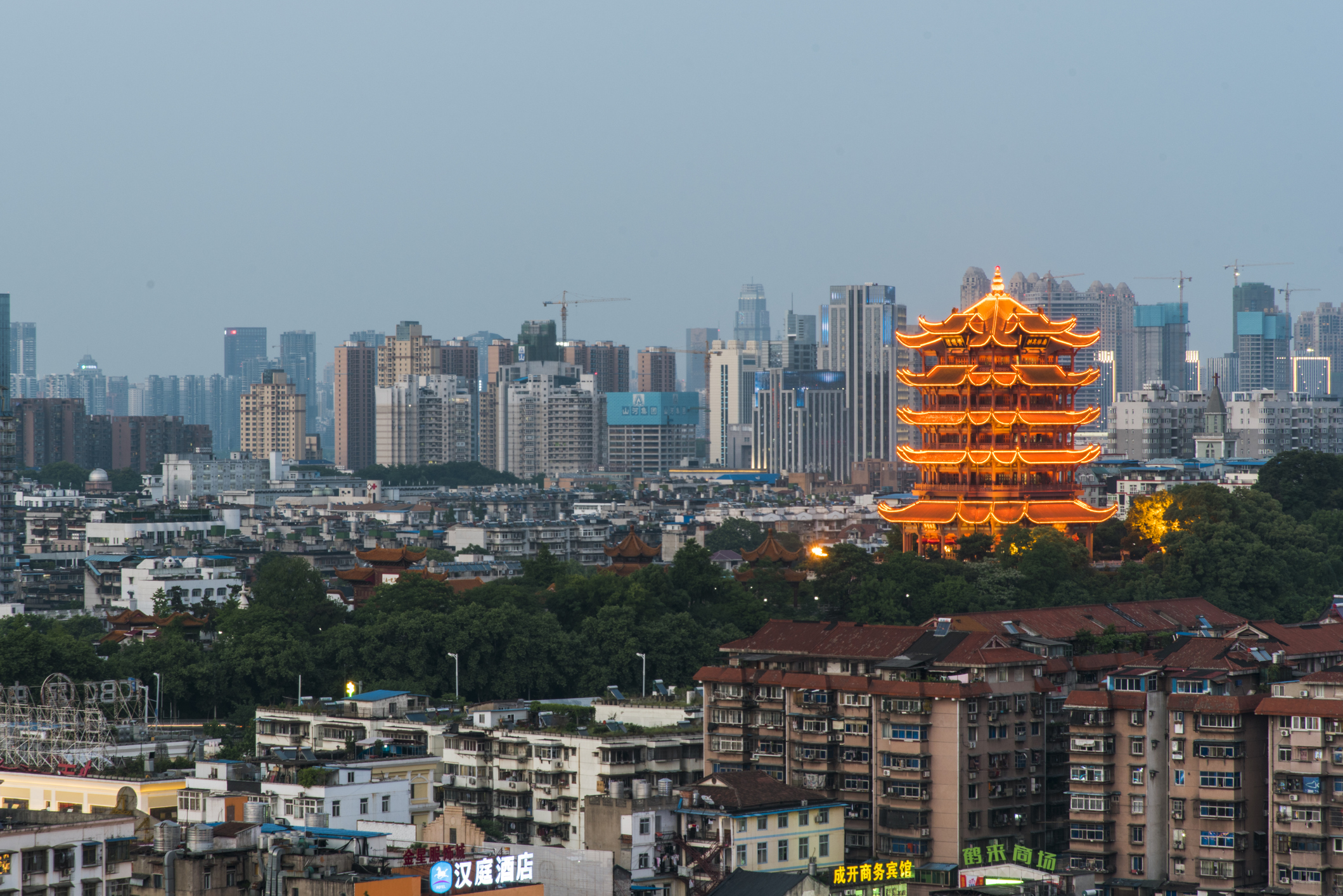
Chinese public health and emergency laws contributed to delayed responses to COVID-19.
As the capital city of Hubei province in south-central China, Wuhan has nearly 15 million residents. When 2019 ended and 2020 began, an unexpected novel coronavirus—also referred to as COVID-19, the name of the disease it inflicts—hit this huge city, spread over to other parts of China, and later became a global pandemic.
As of now, there has been no convincing and authoritative investigation of the Wuhan and Hubei governments’ actions that caused the delayed response in addressing COVID-19. Increasingly, though, information about what happened is being disclosed in a variety of traditional and new media, such as MicroBlog and WeChat. Such information, though fragmented, is cumulatively approaching the whole story. The picture emerging from information already in hand can help determine why current legal systems failed to propel local governments to act quickly to handle the very contagious virus.
When it comes to fighting against outbreaks of contagions, two main legal weapons exist in China: Chuanranbing Fangzhi Fa, or the Law on Prevention and Treatment of Infectious Diseases (LPTID), adopted in 1989, revised in 2004, and amended in 2013; and Tufa Shijian Yingdui Fa, or the Emergency Response Law (ERL), adopted in 2007.
In important respects, these laws fail to address major issues essential for a complicated response system. That system, on one hand, puts greater reliance on national public health and medical experts to make authoritative judgments and announcements, rather than on local public health and medical professionals in cities and counties. On the other hand, this system also needs the local governments and their public health departments to respond as fast as possible to any contagion.
When Wuhan was locked down on January 23, 2020, the spread of COVID-19 seemed out of control. Many individuals on the internet in China criticized Wuhan’s government for being too slow to release virus and contagion information. In an interview on China Central Television, Wuhan Mayor Zhou Xianwang defended his government by saying that, “as a local government, I have obtained the information but only can disclose when I get authorization.”
This apparent shirking of responsibility is rooted in the current law. According to Articles 19 and 38 of the LPTID, it is the National Health Commission (NHC) and provincial governments’ health commissions that are responsible for issuing early warnings of infectious diseases and releasing relevant information in the event of an outbreak or epidemic. Wuhan’s government, therefore, has no power and duty to do that. Considering that China has more than 330 cities and 2,800 counties across the country, the underlying concern is that there may be chaos if the power to release information is delegated to the city and county level.
The ERL, however, requires that when a public health event is imminent or the likelihood of an outbreak is so high that it deserves an early warning, the local governments at or above the county level shall issue the corresponding early warnings in their jurisdictions. The COVID-19 tragedy has focused the attention of both public health and administrative law experts on the contradiction between the ERL and the LPTID and has generated much discussion. Experts have expressed different viewpoints about who is responsible for releasing epidemic information. Some of these experts have emphasized unity and authority, preferring the LPTID, while others argue that timeliness and speediness are more important, prioritizing the ERL.
The key problem with these laws is the lack of an appropriate division of functions and responsibilities inside a complicated hierarchical bureaucracy. The health departments and the subordinate centers for disease control at different levels are staffed primarily with medical experts. But at the horizontal dimension, they must answer to the local governments to which they belong. In practice, they lack the power to decide whether to let the public know the truth. At the vertical dimension, although the NHC and the provincial health commissions are more reliable than their peers at lower levels in judging particular sorts of infectious disease, they must also rely on reporting from lower-level health departments. This reporting may, however, be slowed by local governments.
On the other hand, if local governments do want to give their residents early warnings, according to the LPTID, they have to wait until the NHC or provincial health departments begin to issue early warnings. Future legal reforms should pull the real decision-makers—the local governments—out from the shadows and make them accountable for making the decision of whether to publicize information. Legal reforms should also stipulate quite clearly what early warnings or other information the local governments must issue and what early warnings or information must be released by the NHC or provincial health commissions.
Besides the ambiguous settings around information release, there is another system that was once touted as capable of preventing a SARS-like event from happening again in China. This system is Zhibao Xitong—the Direct Reporting System to the Chinese Center for Disease Control (CCDC)—which aims to speed up reporting from lower levels of government and hence increase the speed of the response at the national level. In 2013, the NHC Director reported to the National People’s Congress Standing Committee:
China has established the world’s largest online direct reporting system for infectious diseases and public health emergencies. At present, 100 percent of centers for disease control at or above the county level, 98 percent of medical institutions at or above the county level, and 94 percent of primary-level medical and health institutions have realized real-time direct online reporting of infectious diseases prescribed by law, and the average time for level-by-level reporting after detection and diagnosis has been reduced from 5 days to 4 hours.
Had the Direct Reporting System worked, the intentional cover-up of the truth by the Wuhan government would have been corrected quickly. But this time, the Direct Reporting System failed. Despite an increasing number of patients with pneumonia of unknown etiology hospitalized in Wuhan, and having already satisfied the threshold for direct reporting, no reports were arriving at CCDC. Why not?
One reason is that any reporting needed to be approved by the heads of hospitals. These heads, however, must listen to the Wuhan Health Commission, which in turn must obey the Wuhan government’s instructions. Furthermore, it was highly likely that the Hubei government and its health commission wanted Wuhan to keep from triggering the Direct Reporting System.
The Wuhan and Hubei governments did realize the situation’s severity but may have thought they could control it secretly without causing unnecessary panic among the public. They decided to bypass the Direct Reporting System by immediately sending samples from patients with pneumonia of unknown etiology for testing to different companies in other provinces. When they were told the disease was probably SARS or a SARS-like virus, or a new coronavirus altogether, the Wuhan Health Commission issued two emergency notices to different medical institutions concerning the prevention and treatment of pneumonia of unknown etiology. The two notices, issued on December 30, were uploaded to the internet by someone who has not been identified—similar to Watergate’s “Deep Throat.” Only then did the NHC notify and order experts to fly to Wuhan. Almost two weeks had passed before a national response was eventually activated.
Looking back, another legal problem loomed.
The Direct Reporting System was initially set up around 2003, very close to a major revision to the LPTID in 2004. Nevertheless, there is no new article in the LPTID about the Direct Reporting System, no stipulation for instructions such as the threshold of direct reporting, no provision about who has the duty to report directly to CCDC, and nothing about whether doctors must bypass the institutional bureaucracy to use the Direct Reporting System. Furthermore, it is ironic that the Direct Reporting System, a system apparently intended to spark a quick response from the top, became entangled with local interventions.
The NHC and CCDC responses cannot be said to have been slow. NHC organized and dispatched three groups of experts to Wuhan, respectively, on December 31, January 8, and January 18. But the former two expert teams did not find human-to-human transmission. Ultimately, it was Nanshan Zhong, an 84-year-old famous respiratory expert leading the third group who announced the discovery of human-to-human transmission at a press conference on January 20. Twenty days had passed from the landing of the first group of experts to the final announcement.
An anonymous expert in the second group disclosed to the media reasons for failing to make the discovery. The second group had visited six hospitals in Wuhan in the company of the Wuhan Health Commission and local hospital staff. When experts repeatedly asked about whether doctors and nurses were infected, they always received negative answers even though these answers were later revealed to be false. The experts did not even see a formal report of how the disease was discovered, what investigations were done, what the findings were, and which cases were first identified. When answering the question of whether they gave up the investigation, the experts replied that they were informed soon upon arrival in Wuhan that it was a local matter and that they were there to help the local government.
In summary, although vertical supervision from the top-level health department was activated in a difficult way, this supervision was slowed down again because both the LPTID and ERL did not clarify whether the NHC and CCDC have the responsibility to make a thorough investigation once experts are sent to the local region. In contrast, both laws put more emphasis on the rapid response by local governments and highlight that an outbreak response is a local matter.
But the Wuhan and Hubei governments might have been worried that the disclosure of information of an unknown or unidentified virus would cause huge panic which could be detrimental to the local economy, social stability, and the overall atmosphere of Chinese New Year. It is not coincidental that the inactivity of the Wuhan and Hubei governments occurred around the most important local political events, such as the sessions of local political consultative conferences and local congresses. Future legal reform should take into account that a disease outbreak is no longer a local matter once vertical monitoring is activated.
This short essay does not afford enough space to discuss the issue of protecting whistleblowers, who certainly would be of great help in forming public opinion that can push the bureaucracy to move forward if both the vertical and horizontal dimensions of the system fail. An efficient and effective legal system designed to handle major public health risks should have a subtle design that can both guarantee fast and reliable responses and avoid unnecessary panic. Such a system must face and handle a new moral climate of politics “marked by a push-and-pull between accusations of scaremongering on the one hand and of cover-ups on the other.” This, of course, is not a dilemma solely faced by China.
This essay is part of an ongoing series, entitled Comparing Nations’ Responses to COVID-19.




